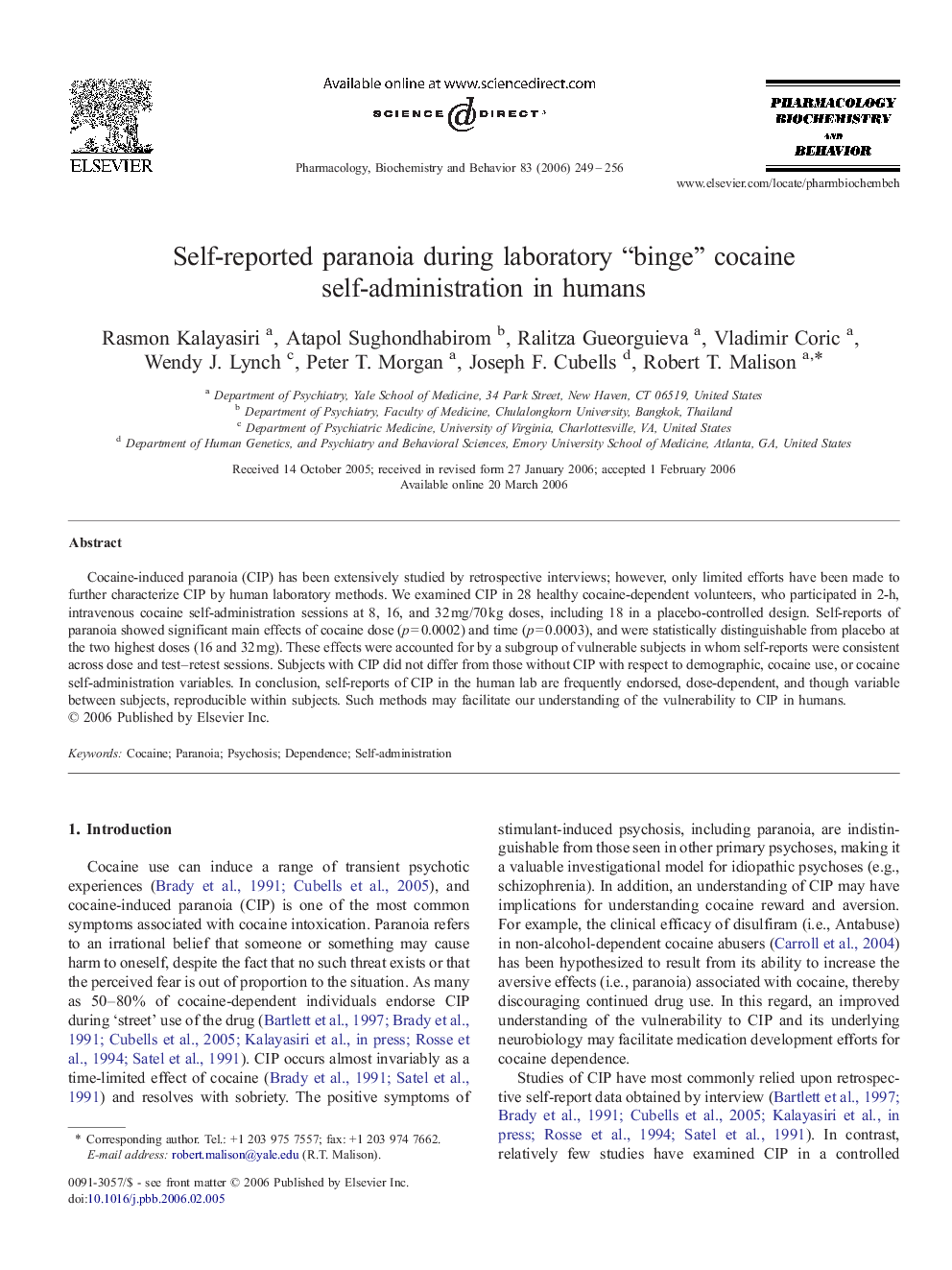| Article ID | Journal | Published Year | Pages | File Type |
|---|---|---|---|---|
| 2014603 | Pharmacology Biochemistry and Behavior | 2006 | 8 Pages |
Cocaine-induced paranoia (CIP) has been extensively studied by retrospective interviews; however, only limited efforts have been made to further characterize CIP by human laboratory methods. We examined CIP in 28 healthy cocaine-dependent volunteers, who participated in 2-h, intravenous cocaine self-administration sessions at 8, 16, and 32 mg/70 kg doses, including 18 in a placebo-controlled design. Self-reports of paranoia showed significant main effects of cocaine dose (p = 0.0002) and time (p = 0.0003), and were statistically distinguishable from placebo at the two highest doses (16 and 32 mg). These effects were accounted for by a subgroup of vulnerable subjects in whom self-reports were consistent across dose and test–retest sessions. Subjects with CIP did not differ from those without CIP with respect to demographic, cocaine use, or cocaine self-administration variables. In conclusion, self-reports of CIP in the human lab are frequently endorsed, dose-dependent, and though variable between subjects, reproducible within subjects. Such methods may facilitate our understanding of the vulnerability to CIP in humans.
